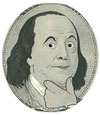DOG and DUCK
I watched a nature video on BBC America which I believe has profound application to teaching. Please bear with me as I describe it, as it seems important.
A man near the Canadian part of the Arctic Circle who raises sled dogs happened to video a polar bear approaching one of his dogs. The bear was obviously starving as it was the time just before the sea water was frozen enough for the bears to go out to hunt seals.
The bear approached the staked dog in a focused, predatory crouch obviously expecting an easy meal, but when the husky noticed the bear, it went into a playful, greeting prance. The polar bear immediately changed its whole demeanor and began to playfully tussle with the dog. The two continued to play together for some time until the bear tired and wandered away.
The narrator of the piece explained that the more intelligent the animal the more they play, primates, whales, dolphins etc. He explained that the need for play is so strong in their behavior that it even over comes starvation.
Now to my point: Humans are one of the most intelligent animals on earth. We need play. Play is how we learn. I have found that teachers who are able to maintain an atmosphere of play in their classrooms are ultimately more successful.
My wife, Melissa May-Moncus, is simply, an absolute but unassuming genius. As a teacher she is brilliant and well trained with a master’s degree in special education. She also holds a bachelors degree in theatre and uses her vast talent and experience in drama in her dealing with the students. She has written an excellent paper on using theatre and play with special needs students.
Beyond these credentials, and perhaps more importantly, her instincts for what works with kids are impeccable. A good teacher uses their training to reach students. A great teacher uses everything in their arsenal: training, experience, sense of humor, compassion, love, life and play.
Aw, go fly a kite!
As we all know, Ben played around with a kite and changed the world.
When he was 46, he proved that lighting was really electrical energy and that it could be transferred to other objects. Flying a kite in a thunder storm on a wet silk string with a metal key proved the existence of electricity. Realizing that electricity could be channeled through a conductor, he invented the lightning rod. This simple rod saved cities from their greatest fear: fires started by lightning.
He then became the most famous scientist in the world.





